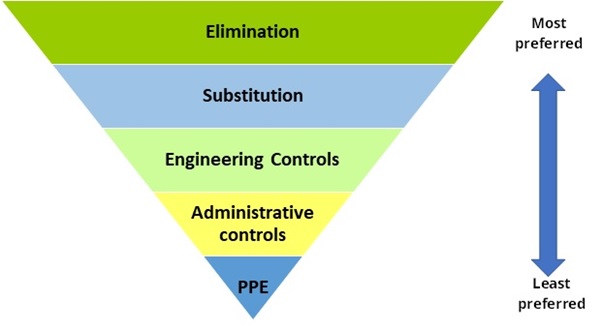Select appropriate and adequate risk controls following the hierarchy of control to reduce workers’ exposure to WH hazards.
What is hierarchy of control?
Hierarchy of control is a step-by-step approach to eliminating or reducing risks and it ranks risk controls from the highest level of protection and reliability through to the lowest and least reliable protection. Elimination, substitution, and engineering controls are more effective in reducing or controlling the risk of workers’ exposure to WH hazards and should be considered first.

Reduce workers’ exposure to toxic substances and excessive noise
Exposure to toxic substances
Workplace occupiers are required to prevent the accumulation of toxic dust, fumes, gas, vapour, mist, fibre, or other contaminants and protect workers from exposure to these contaminants in the workplace.
Several upstream risk control measures that occupiers can implement to reduce workers’ exposures to toxic airborne contaminants can be found under Regulation 39(2) of the Workplace Safety and Health (General Provisions) Regulations.
Exposure to excessive noise
Workplace occupiers are required to reduce or control the noise from any machinery or equipment used, so that no workers will be exposed to excessive noise.
Several upstream risk control measures that occupiers can implement to reduce noise levels in the workplace can be found under Regulation 4(3) of the Workplace Safety and Health (Noise) Regulations.